How to Prepare Your Vegetable Garden for Winter
This post may contain affiliate links, which means that I may receive a commission if you make a purchase using these links. As an Amazon Associate I earn from qualifying purchases.
Get your vegetable garden ready for winter with these practical tips. Clean up, enrich soil, plant garlic, and prepare beds for a strong spring start.
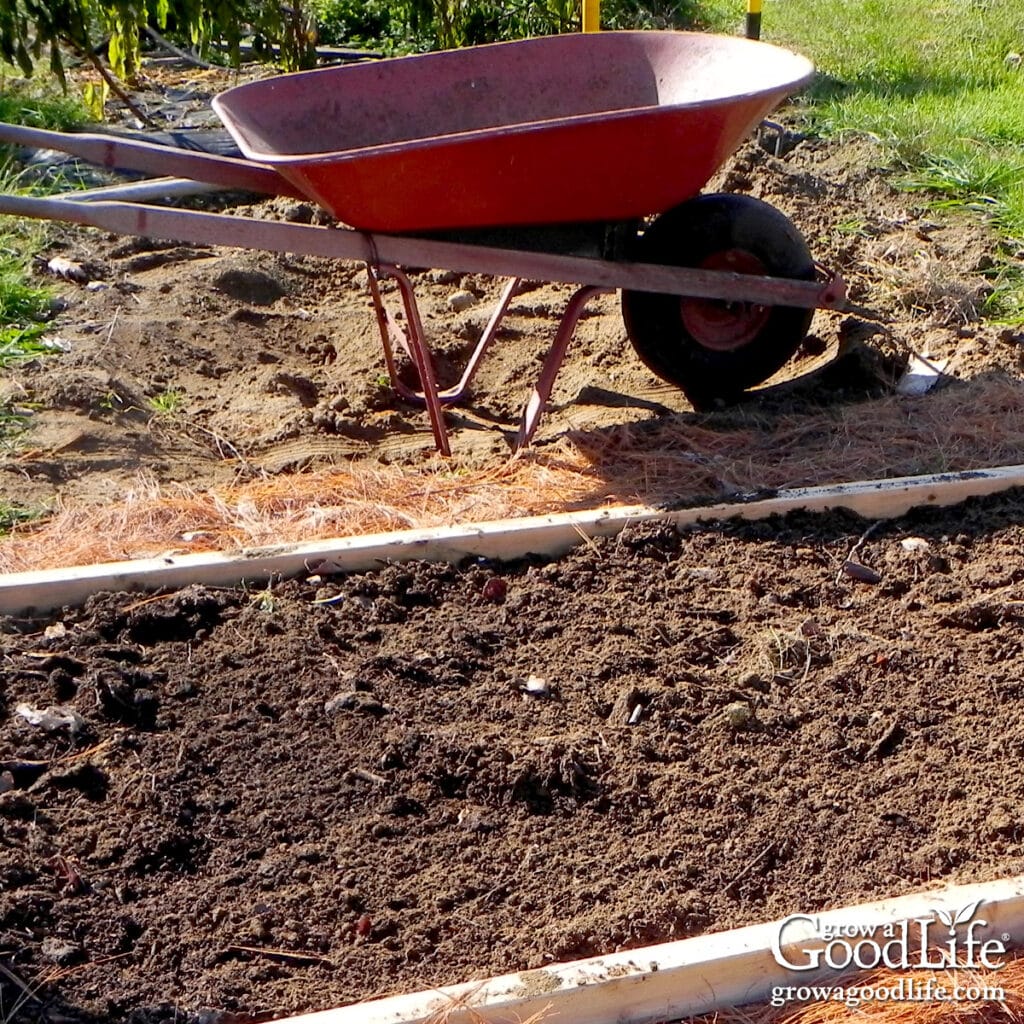
I have mixed emotions each autumn as the gardening season winds down. Since our growing season here in Maine is short, September often turns into a preserving marathon. Most of my time is spent in the kitchen trying to keep up with the avalanche of harvest bounty that seems to ripen all at once.
The vegetable garden gets very little attention during this time, except for daily walkthroughs to pick what’s ready. There’s no time for weeding, trimming, or assessing plant health. At that point in the season, the plants are on their own. They either succeed or they don’t.
By the time frost arrives in October, the garden is usually a tangled mess of dying plants, weeds, and rotting tomatoes. There will be no more tomatoes to process, except for those still ripening on the kitchen counter. There will also be no more cucumbers to pickle, string beans to can, or zucchini to shred and freeze.
Still, I’m filled with a deep sense of satisfaction each year as I fill the pantry with jars and the cellar with storage crops. This is the reward for all the effort spent nurturing, watering, and late-night canning throughout the growing season. This is why I garden.
When the major harvests wrap up, I’m both relieved and a little sad. But I always feel better once I get outside and start preparing the beds for winter.
Tips to Prepare Your Vegetable Garden for Winter
Here are some helpful tasks to tackle in fall that will protect your soil and set you up for a successful spring garden.
Clean Up Spent Plants and Garden Debris
The garden can feel like a daunting mess by the end of the season. But don’t let it overwhelm you. Break cleanup into manageable chunks and tackle one bed or section at a time.
- Remove all spent plants: Pull dead or dying crops, faded annual herbs, and rotting fruit and vegetables. Many pests and plant diseases, including Late Blight, can overwinter on foliage and fruit left in the garden. Remove all dead plant material and any rotten fruit or vegetables.
- Compost what’s healthy: If plants were disease-free, toss them in the compost. Most compost piles do not reach a high enough temperature to kill disease or fungus. So, if your plants are unhealthy with mildew, mold, or blight, dispose of the foliage with the household trash or burn it to avoid spreading it to your compost pile.
This simple cleanup step helps reduce overwintering pests and sets the stage for healthier beds in spring.
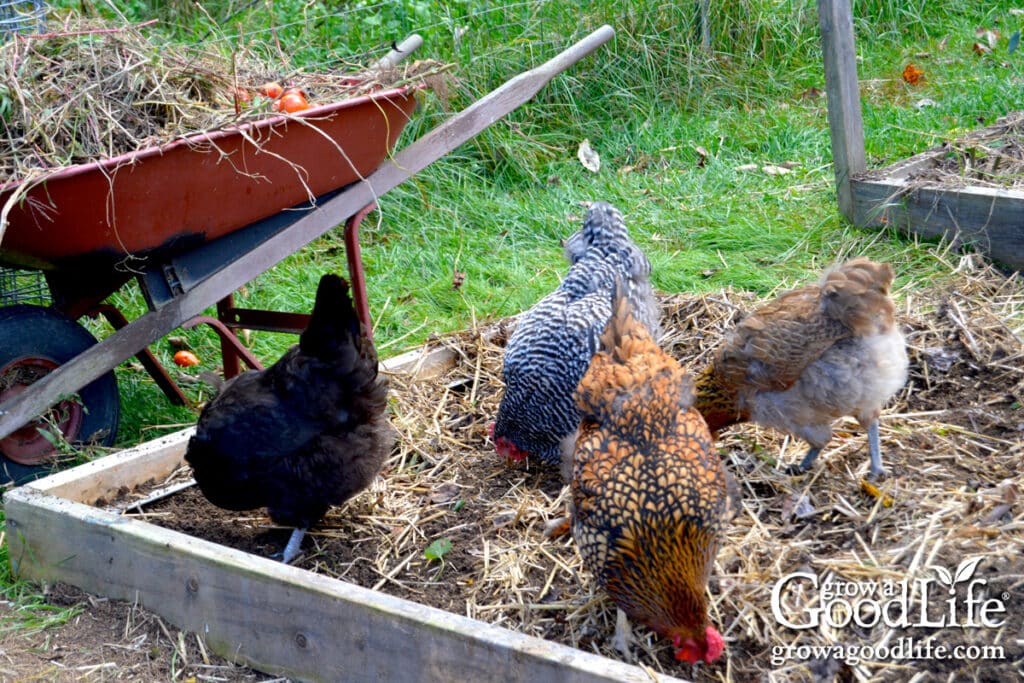
Feed the Soil with Compost and Mulch
Once your beds are cleared, gently push aside the existing mulch, remove any weeds, and replenish the soil with compost.
- Add compost: Top the soil with 2 to 3 inches of compost.
- Tuck beds in lightly: Then loosely cover with old mulch, such as straw or shredded leaves, to suppress late fall weeds and prevent erosion.
- Once the ground is frozen: Go back and add another layer of mulch, especially around garlic and perennials such as herbs and flowers.
Tip: Avoid heavy mulching right away. Many diseases and pests are killed when the soil freezes in winter. Mulching the beds too thickly could prevent the soil from freezing completely. Instead, add another layer of mulch after the ground freezes and the plants are dormant. Learn more about How Mulch Helps Your Garden.
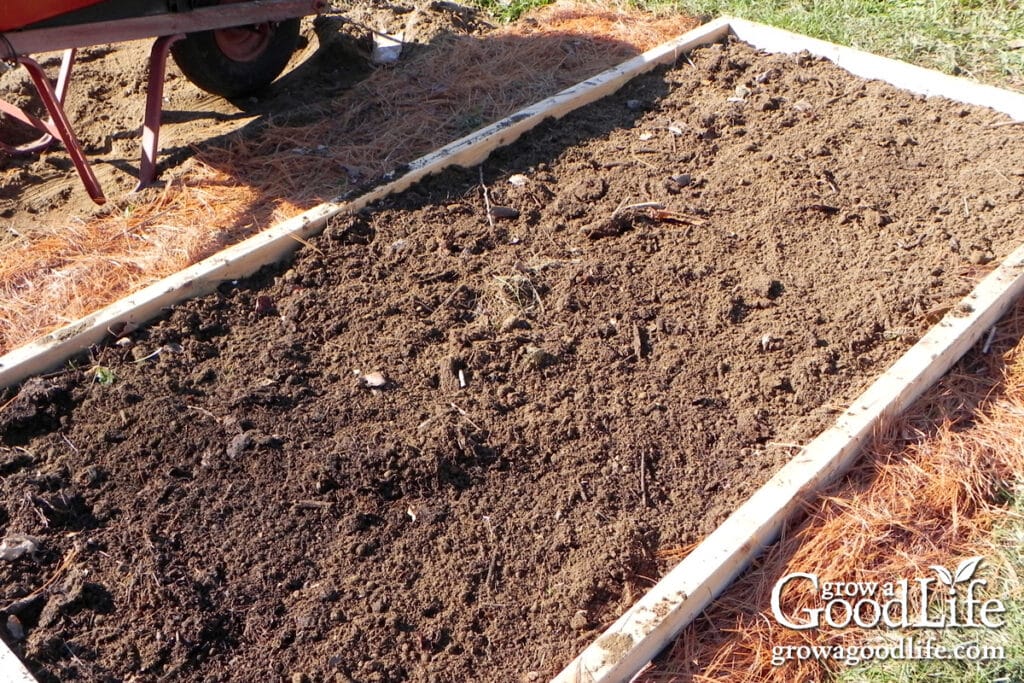
Test and Amend Your Soil
Fall is a great time to have a soil test done to determine if your soil would benefit from amendments to add nutrients and adjust the pH.
A basic soil test will show:
- Soil pH
- Levels of nutrients like potassium (K), phosphorus (P), calcium (Ca), magnesium (Mg), and sulfur (S)
- Organic matter content
- Presence of lead or other contaminants
Most state extension offices (Find yours here) offer affordable testing or can recommend a reputable lab.
The results will typically recommend the amount of lime and fertilizer (organic or chemical) to add to improve your soil. Lime is commonly used to adjust the soil pH. Fall is the perfect time to apply it because it takes time to break down and become available to your plants. Save other soil amendments, like fertilizers, for spring.
Tip: Be sure to keep a copy of your results and update your gardening journal so you can track the improvement in your soil year over year.
Plant Cover Crops to Protect and Enrich Soil
Cover crops are a simple way to protect your garden soil over winter while adding nutrients for spring. Sow quick-growing cover crops in early fall.
- Prevent soil erosion: Roots hold the soil in place during fall rains and spring snowmelt.
- Reduce compaction: Cover crops improve soil structure and keep the surface loose.
- Add organic matter: When tilled under or cut down in the spring, they naturally enrich the soil.
- Feed pollinators: Flowering cover crops, such as clover, provide nectar for late-season insects.
Some of the best options for home gardens include:
- Winter rye: Hardy and fast-growing, great for larger beds.
- Clover: Fixes nitrogen and improves soil fertility.
- Field peas or vetch: Adds nitrogen and breaks down quickly.
Tip: Plant cover crops about 4 to 6 weeks before your first hard frost so they have time to establish. In spring, cut them down before they flower and work them into the soil, or use them as mulch. Learn more: Tips for Planting Cover Crops.
Plant Garlic Before the Ground Freezes
Fall is garlic-planting time! Choose a bed that didn’t grow onions, leeks, or garlic this year, and prep it with compost and organic fertilizer.
- Plant cloves about 6 inches apart and 4 inches deep.
- Mulch lightly at planting time.
- Once the ground freezes, add a thick layer of mulch to insulate.
- Learn more: How to Plant Garlic in the Fall Garden.
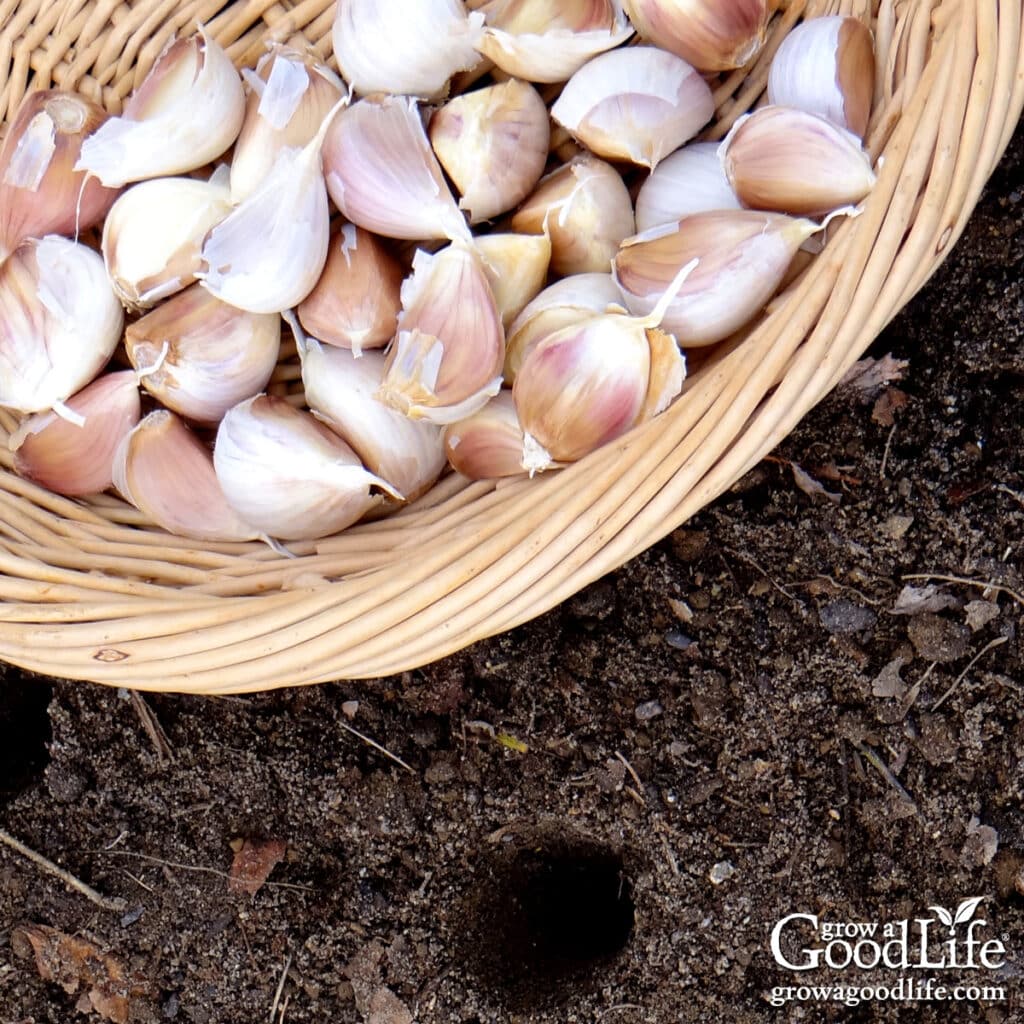
Expand Your Garden with New Beds
If you’re thinking about expanding your growing space, fall is an ideal time to do it. Consider building a few raised beds or square-foot gardens directly on top of the grass. Many garden centers have bagged organic garden soil and compost on sale in the fall.
- Build raised beds or square foot gardens right over grass or weeds.
- Fill with a mix of compost and soil while supplies are on sale.
- Add a layer of mulch to suppress weeds and protect the soil.
By spring, your beds will be settled and ready for planting. Learn How to Build a Square Foot Garden raised bed.
Gather and Use Fall Leaves in the Garden
Fall leaves are truly gardeners’ gold. I try to gather as many leaves as I can in the fall and fill up my compost bins or store them in garbage bags.
Here’s how I use them:
- Leaf Mulch: Shredded leaves make excellent mulch for garden beds. They suppress weeds, retain moisture, and break down slowly to feed the soil. Learn more: Leaf Mulch: How to Use Shredded Leaves in the Garden.
- Compost Ingredient: Leaves are the perfect “brown” (carbon) material to balance out kitchen scraps and other “green” (nitrogen) material in your compost bin. Learn How to Make Compost.
- Leaf Mold: Over time, a pile of leaves transforms into rich, earthy leaf mold, which is excellent for improving soil structure and moisture retention. Learn more: How to Make Leaf Mold to Improve Your Soil.
Tip: One of the easiest ways to gather and shred leaves is to use your lawn mower, either with a bagger or without. If you use a bagger, the mower will shred up a nice combination of grass and leaves that can be emptied into your compost bins.
Even if you don’t have a bagger on your mower, with some strategic mowing, you can direct the side discharge to gather the shredded leaves and grass into a pile. Then rake up the pile and fill your compost bin or store them in garbage bags.
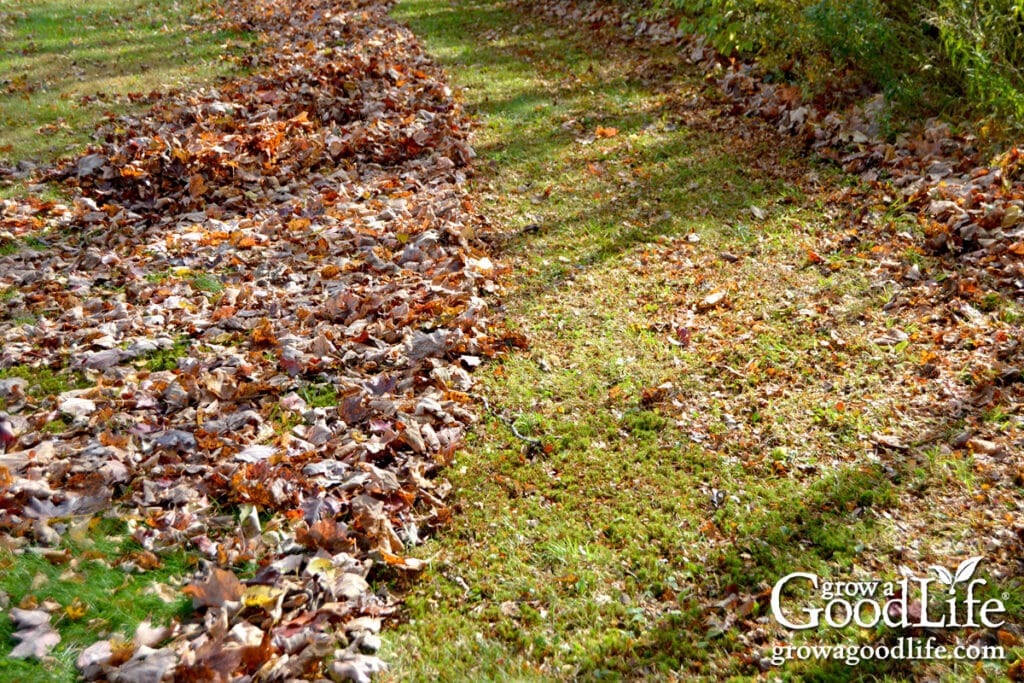
Reflect, Take Notes, and Plan Ahead
As you clean up, take a few moments to reflect on the season. Take notes on how many plants you grew, which varieties did well, and how much you harvested and preserved.
Jotting down these details now, while they are still fresh in your mind, will help you plan your vegetable garden for next year. It will also give you time to research solutions to problems you may have encountered.
Take notes on:
- What grew well?
- What didn’t?
- How much did you harvest?
- What pests did you have to deal with this year?
- Was there a garden bed that didn’t perform very well?
This info will be invaluable when you’re mapping out next year’s planting plan. A simple notebook works just fine, or use my tips here: How to Keep a Gardening Journal.
Bonus: Enjoy the Fall
End of season garden cleanup might not have the excitement of spring planting or the satisfaction of summer harvests, but it has a rhythm and beauty all its own.
Take time to enjoy the crisp, cool days of fall while working in the garden. No humidity certainly makes outdoor work more comfortable. Observe the beauty around you and the warmth of the sunlight. Take a deep breath and enjoy the fresh aroma of the soil. Soon, all will be covered with snow and frozen until spring.

Tucking the Garden In for Winter
Taking the time to prepare your vegetable garden for winter is one of the best ways to set yourself up for success in spring. When the snow finally melts, your beds will be weed-free, enriched, and ready to plant.
Until then, cozy up with your notes, dream up next year’s garden, and rest easy knowing your soil is sleeping well beneath the mulch.
This article was originally published on October 2, 2015. It was updated on September 14, 2025 with additional tips and resources.

Hi! All the tips mean a lot for a beginner like me. But after getting the soil tested, I came to know that the selected soil is a little bit acidic. So, is it good to plant potatoes in acidic soil? Please guide. Thanks
Florine, How acidic is your soil? Potatoes actually prefer slightly acidic soils pH of 5.3 to 6.0. Higher pH, over 6.0 makes them more susceptible to scab. If your soil is lower than 5.3, your soil test should tell you how much lime to add to your soil to increase the pH.
Thank you RACHEL for your reply. The pH of the soil is 5.7. I think it is quite good to grow potatoes, isn’t it?
Florine, Yes, 5.7 is a good pH for growing potatoes! 🙂
Thank you
I have not been successful in composting in the past few years. My tomatoes had brown spots on the bottom this year and a local garden center told me it was because the soil is deficient in calcium. I have been saving egg shells all summer and fall to provide some natural calcium to the soil. The question is, should I put them in the soil now or wait for spring? Also, a friend of mine has a horse and last year I got some of her manure and put it in the beds in the fall. Should I continue to do that every fall?
Linda, Amending your soil yearly is always a good idea. Do you have a compost bin? If so, I would add the eggshells, horse manure, and a bunch of fall leaves to a compost bin and let things break down a year before adding it to the garden. Here are tips on composting -> How to Start Composting
There will be a lot of weed seeds in the horse manure. The heat from an active compost pile will kill most of the seeds and any nasty bacteria. Also, be sure your manure isn’t contaminated with herbicides or you’ll be facing a different problem.
I wouldn’t worry about a few spots on the bottom of your tomato plants. There are a lot of reasons this may happen. Although it may look unsightly, it usually it isn’t enough to kill your plants. A soil test can help identify any deficiencies and suggest amendments, if needed.
Great article! I love using leaves as mulch in the garden. Now I’m off to go get my gardens ready for winter!
Thanks for sharing, I always feel so much better when I spend even a few minutes in my little outside garden, These are great fall tips too.
Preparing your garden for winter the right way is crucial if you want a thriving garden for spring.It will also give you less work in winter and in spring.
The thing you share is very useful. Thanks!!!
Can I print this off and put in a garden notebook? I’m trying to make a homemaking notebook, recipe, and gardening notebooks. This article is so good. I was hoping to keep it.
Julie, Yes, you can print it using the print button on your web browser. Let me know if you run into problems and I will work something up for you.
Thanks for your comment about how getting a soil test will allow you to know what type and amount of fertilizer you should use on them, I also like how you said that the organic type is good for plants that did not make it last season. My husband and I love to garden, and we are considering organic fertilizers to have a better chance of our plants turning up.
One note on Extension Offices offering soil tests – a good number NO LONGER offer the service. I work at a county Extension Office and we’re great at offering a lot of things. We can give you information on soil tests including a list of laboratories where you can pay for a soil test. Sorry but I see that advice written in many gardening articles but a lack of funding has hit us all.
Thanks for the heads up. Luckily, many extension offices still do offer soil tests. I have edited the text to encourage people to research in their own state for information.
Thanks for this very helpful article.